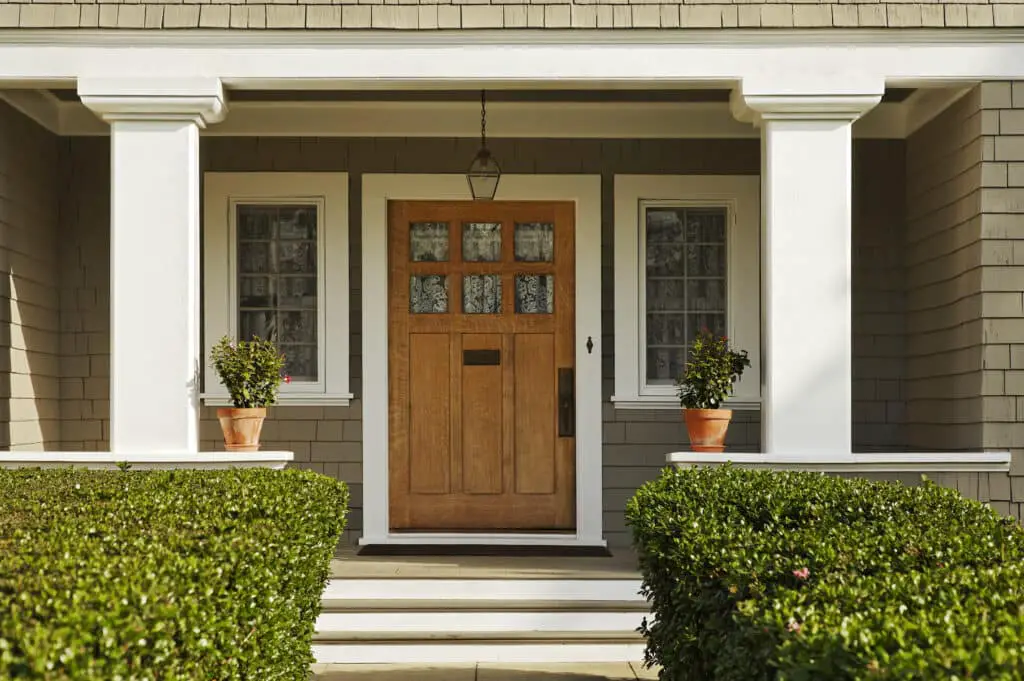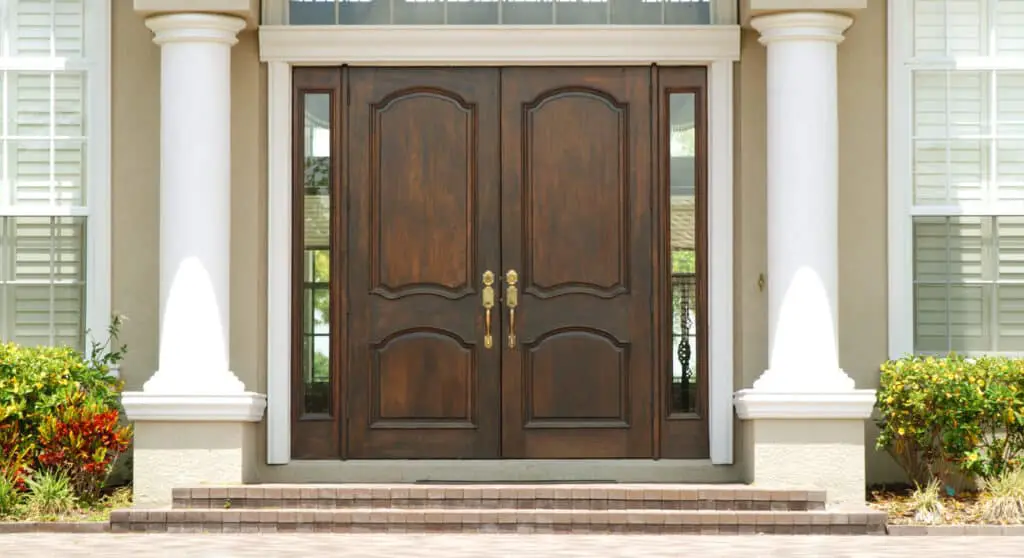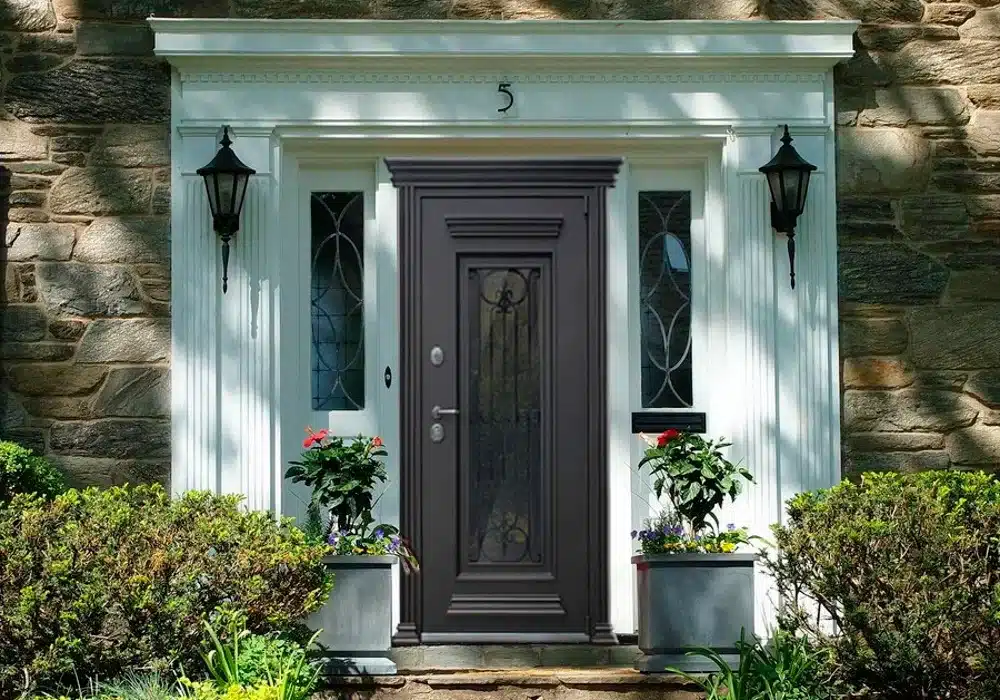How To Replace Exterior Door Frame
Introduction
How To Replace Exterior Door Frame: The door frame serves as a crucial component, providing structural support and a secure anchoring point for your exterior door. Over time, due to wear and tear or changing design preferences, the need to replace the door frame can arise. Whether you’re a seasoned DIY enthusiast or a novice homeowner eager to take on a new challenge, this step-by-step guide will equip you with the knowledge and confidence to successfully navigate the process.
Replacing an exterior door frame might seem like a daunting task, but with the right tools, materials, and guidance, it becomes a manageable and rewarding endeavor. Throughout this guide, we will walk you through each stage of the replacement process, from initial preparation and dismantling of the old frame to the precise installation of the new one. Clear and concise instructions, accompanied by illustrative images, will ensure that you grasp each step with clarity.
A new doors exterior frame not only revitalizes the appearance of your home’s entrance but also improves energy efficiency and security. Before you embark on this DIY journey, take the time to gather your supplies and familiarize yourself with the steps ahead. By the end, you’ll not only have acquired a valuable skill but also have a renewed sense of accomplishment as you admire the seamless and secure new frame adorning your exterior door.

Can you replace a door frame yourself?
Can You Replace a Door Frame Yourself? Installing a new door frame is a job that you can do yourself, in a pinch. However, installing a full pre-hung door, or a new solid door, is something that is best done with a helper.
Replacing a door frame is a moderately challenging DIY project that can be undertaken by individuals with some handyman skills and the right tools. However, it’s important to note that the difficulty level can vary depending on the extent of damage and the type of door frame (wooden, metal, or composite). Here are the general steps involved:
- Assessment: Begin by assessing the damage to the door frame. If it’s a minor issue like a cracked jamb or casing, you may be able to repair it rather than replacing the entire frame. However, if there’s significant damage, it’s usually better to replace it.
- Gather Tools and Materials: You’ll need basic carpentry tools like a saw, hammer, screwdriver, chisel, and a level. Additionally, you’ll require a new door frame, screws, nails, shims, and paint or finish to match your door.
- Remove the Old Frame: Carefully remove the door and its hardware. Then, use your tools to detach the old frame from the wall. This can be tricky and may involve cutting the frame apart if it’s embedded within the wall.
- Install the New Frame: Fit the new frame in place, ensuring it’s level and plumb. Shim it as needed to make it stable, and then secure it to the wall with screws. Reattach the door and hardware.
- Finish and Paint: Finally, finish the job by filling any gaps or holes, sanding, and painting or staining the frame to match your door.
Keep in mind that replacing a door frame requires precision and patience, and it may be best to consult tutorials or seek advice from a professional if you’re unsure of your skills.
Can you repair an exterior door frame?
To fix dents or gouges, fill the damaged areas with 2-part wood filler. Once it’s dry, sand it smooth so you can prime and paint it. To repair a rotten door frame, remove all of the rotted wood with a chisel. Fill in the area with an epoxy wood filler, let it harden, and then apply finish.
Yes, you can repair an exterior door frame, depending on the extent of the damage. Repairing a door frame is often a more cost-effective solution than completely replacing it. Here are the general steps for repairing an exterior door frame:
- Assessment: First, assess the damage. Common issues include rot, cracks, or damage caused by pests or weather. If the damage is minor and limited to a small area, it’s usually repairable.
- Remove Damaged Areas: Carefully remove the damaged portions of the frame. This might involve cutting out rotted wood or chiseling away damaged sections.
- Fill and Reinforce: Fill any holes or gaps with wood filler or epoxy. Reinforce weak areas with wood or metal braces. Ensure that the frame is level and stable.
- Sand and Finish: Once the repairs have dried and cured, sand the frame to a smooth finish. You can then paint or stain it to match the rest of the door frame.
- Seal and Protect: Apply a protective sealant to the repaired areas to prevent future damage from moisture or pests.
Keep in mind that the success of the repair depends on the extent of the damage and your DIY skills. If the frame is severely damaged or rotted throughout, it might be more practical to replace it.
Is it better to replace door frame?
Repairing a door frame is typically cheaper than replacing it. However, repairing may not be the best option if the damage is severe, if there are signs of wood rot or if the frame is outdated.
Whether it’s better to replace a door frame or repair it depends on the condition of the frame and your specific circumstances.
- Replace the Door Frame: It’s usually better to replace the door frame when:
- The frame is extensively damaged, rotted, or structurally compromised.
- You want to upgrade to a more energy-efficient or secure frame.
- The door frame is outdated, and you want to match it with a new door or aesthetic changes to your home.
- You’re experiencing recurring issues despite multiple repairs.
- Repair the Door Frame: Repairing the door frame is a suitable option when:
- The damage is localized and not extensive.
- Your budget is limited, and the repair is cost-effective.
- You want to maintain the existing look and style of your door frame.
- The frame is relatively new and still in good condition aside from minor issues.
In many cases, it’s a judgment call. If you’re unsure, consult with a professional for an assessment and advice tailored to your situation. They can help you determine the best course of action for your specific door frame problem.
How do you remove a metal door frame?
If no screws are visible, the frame is likely welded.
- Remove any trim or casing from around the frame.
- Use a drill or screwdriver to remove the screws from the face of the frame.
- Pull the jambs away from the wall one at a time.
- Remove door and frame trim or casing so that the frame is easy to access.
Removing a metal door frame can be a complex process that requires careful attention to detail. Here are the general steps for removing a metal door frame:
- Prepare the Area: Clear the area around the door and make sure there’s no obstruction. Remove any door hardware such as handles, locks, and hinges.
- Loosen Fasteners: Identify and remove any screws or fasteners that are holding the metal frame in place. These are typically located around the perimeter of the frame where it attaches to the wall.
- Cut the Frame: Use a reciprocating saw or a hacksaw to carefully cut through the metal frame. Be cautious not to damage the wall or surrounding structure during this process.
- Remove Frame Sections: After cutting, you can start removing sections of the metal frame. Depending on the frame’s design, it may come out in pieces or as a single unit.
- Patch and Repair: Once the frame is completely removed, you’ll likely have holes or gaps in the wall. Patch these with suitable materials, such as drywall or plaster, and sand them smooth.
- Finish the Wall: Finish the patched areas by sanding, priming, and painting to match the rest of the wall.
- Install a New Frame: If you’re replacing the frame with a new one, follow the installation instructions for the new frame carefully.
It’s important to emphasize that removing a metal door frame can be challenging and may require professional assistance, especially if you’re unfamiliar with working with metal or if the frame is part of a load-bearing wall. Always exercise caution and take safety measures when undertaking such projects.
Is it expensive to fix a door frame?
The cost of door frame repairs is between $150 and $360, with a national average of $255. If it’s beyond repair, replacing an exterior door frame runs from $130 to $390, with an average cost of about $270. Door frames are an important component of any construction.
The cost of fixing a door frame can vary widely depending on several factors. The extent of the damage, the type of door frame (wooden, metal, or composite), and whether you plan to DIY or hire a professional all play significant roles in determining the expense.
Minor repairs, such as filling in small holes or cracks, can be relatively inexpensive. You may only need some wood filler, putty, or paint, which can cost just a few dollars. These types of repairs are also manageable for many homeowners with basic DIY skills.
However, more extensive damage, like severe rot, structural issues, or damage requiring the replacement of a significant portion of the frame, can be more costly. In such cases, you might need to hire a professional carpenter, and the cost could range from hundreds to thousands of dollars, depending on the complexity of the job.
Additionally, if the damage to the door frame is a symptom of underlying issues like water infiltration or pest infestations, you may need to address those issues as well, which can further increase the overall expense.
It’s important to assess the damage carefully and consider your budget and DIY capabilities before deciding on a repair or replacement.
How to repair steel exterior door?
Fixing surface damage on a metal door
Step 1: Sand the damaged area. Use sandpaper or a sanding block to remove any existing rust or paint from the damaged area.
Step 2: Fill the damaged area. Use a putty knife to fill the damaged area with auto body filler putty.
Step 3: Sand the patch.
Step 4: Paint the patch.
Repairing a steel exterior door typically involves addressing common issues like dents, rust, or damaged paint. Here’s a step-by-step guide to help you repair a steel exterior door:
Repair Steps:
- Safety First: Start by wearing safety goggles and gloves to protect yourself during the repair process.
- Prepare the Work Area: Lay down drop cloths or plastic sheeting to protect your surroundings from paint and debris. Remove any hardware attached to the door, such as handles, locks, and hinges. If the door is still hung, you can tape off the edges with painter’s tape to protect the frame and any glass inserts.
- Dent Repair:
- For small dents, use a plunger to pop them out. Place the plunger over the dent, create a seal, and push and pull until the dent pops out.
- For larger dents, use auto body filler:
- Clean the area around the dent and remove any loose paint or rust with sandpaper or a wire brush.
- Follow the manufacturer’s instructions to mix and apply the filler.
- Smooth the filler with a putty knife or scraper, creating a level surface.
- After it dries, sand the filler smooth with progressively finer grits of sandpaper until it’s flush with the door’s surface.
- Rust Removal and Treatment:
- If there’s rust on the door, use sandpaper or steel wool to remove it until you reach clean, bare metal.
- Apply a rust converter or rust-inhibiting primer to prevent further rusting. Follow the product’s instructions for application and drying time.
- Priming:
- Apply a coat of exterior-grade metal primer to the entire door, following the manufacturer’s instructions. Allow it to dry completely. Primer helps the paint adhere and provides additional protection.
- Painting:
- Choose an exterior-grade metal paint in your desired color.
- Apply at least two coats of paint, allowing each coat to dry thoroughly between applications.
- Use a paintbrush or roller, depending on the door’s texture and your preference.
- Paint in even, smooth strokes, working from the top of the door down.
- Pay attention to details, such as panel edges and any decorative features.
- Reattach Hardware: Once the paint is dry, reattach the hardware, making sure it’s properly aligned and secure.
- Cleanup: Remove any painter’s tape and clean up your work area.
- Final Inspection: Inspect the door for any touch-ups or areas that might need additional attention. Fix any imperfections as necessary.
Repairing a steel exterior door is a manageable DIY project that can save you money compared to replacing the entire door. However, if the door has severe structural issues or damage, or if you’re uncertain about your ability to make the repairs, it’s advisable to consult with a professional or consider door replacement for long-term peace of mind and security.
Why replace door frame?
At some point in time, it can wear or tear. Or external factors such as natural disasters or pest infestation may cause it to flake or rot. In this case, you need to repair or replace your door frames. The replacement may be necessary if the door frame has completely weakened or suffered rot.
There are several reasons why you might choose to replace a door frame rather than attempting to repair it:
- Extensive Damage: When the door frame has significant structural damage, such as severe rot, termite infestation, or warping, replacing it is often the most practical solution. Repairing such damage can be temporary and may not provide long-term stability.
- Energy Efficiency: Older door frames may not provide adequate insulation, leading to drafts and energy loss. Replacing the frame with a newer, energy-efficient model can improve your home’s insulation and reduce heating and cooling costs.
- Security: If the door frame has been compromised due to a break-in or damage, replacing it with a more robust frame can enhance the security of your home.
- Aesthetic Reasons: When you’re renovating your home or updating its appearance, replacing the door frame can be part of the overall design. A new frame can match the style and finish of your new door and enhance your home’s curb appeal.
- Functionality: If you’re changing the type or size of your door (e.g., replacing a single door with a double door), you’ll likely need to replace the frame to accommodate the new door’s dimensions and hardware.
In many cases, the decision to replace a door frame comes down to the extent of damage, your long-term goals for your home, and your budget. Consulting with a professional can help you make an informed choice based on your specific circumstances.
Is it easy to remove a door frame?
If you have a reciprocating saw or hacksaw with blades suitable for cutting metal, you can run this between the wall and the frame to cut any nails or screws. This should allow you to remove the frame without needing to pry off individual pieces.
Removing a door frame can be a moderately challenging DIY project, and the ease of removal can vary depending on the type of door frame and your experience with such tasks.
- Wooden Door Frame: Removing a wooden door frame is generally easier than a metal frame. It usually involves removing screws, nails, or other fasteners that secure the frame to the wall. Afterward, you may need to carefully pry the frame away from the wall. The challenge here is not damaging the wall during removal.
- Metal Door Frame: Removing a metal door frame can be more complicated, especially if it’s embedded into the wall. You will need to locate and remove fasteners and then potentially cut the frame to remove it. This may require specialized tools like a reciprocating saw or hacksaw.
Regardless of the type of frame, it’s essential to take precautions to avoid damaging the surrounding wall or compromising the structural integrity of the building. If you’re unsure about your DIY skills or the specific challenges of your door frame, consider seeking the guidance of a professional to ensure a safe and successful removal.

Conclusion
Replacing an exterior door frame is a home improvement project that offers both functional and aesthetic benefits. As you have now successfully navigated through this comprehensive guide, you’ve gained valuable insights and hands-on experience that will serve you well in maintaining and enhancing your living space.
By following the step-by-step instructions provided, you’ve demonstrated your ability to take on a seemingly complex task and break it down into manageable stages. Your efforts have not only resulted in a newly installed door frame but have also contributed to the overall security, energy efficiency, and visual appeal of your home. As you stand back and admire your handiwork, take pride in the fact that you’ve acquired a skill that can positively impact your living environment for years to come.
Remember that safety and precision were emphasized throughout this guide. These principles are not only relevant to this particular project but are valuable attributes to carry forward into any future DIY endeavors you may undertake. Furthermore, the satisfaction derived from completing such a practical task can foster a sense of empowerment and confidence in your ability to handle home maintenance and improvement tasks independently.
In your journey to replace an exterior door frame, you’ve not only renewed an essential part of your home but also gained a deeper understanding of construction processes. As you continue to refine your DIY skills, may the knowledge and experience gained from this guide inspire you to take on new challenges and make your living space a true reflection of your vision and effort.








